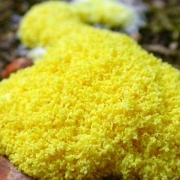Guest commentary by Melinda Ballard; POA
Austin, TX – Don’t be fooled: mold is gold for insurers. The sudden rise in the number of mold claims filed with insurers between 1999 and 2001 has now dropped off sharply. In its wake, insurers successfully threatened to pull out of certain states and lobbied state officials to reduce coverage and/or cap repairs while increasing premiums.
In Texas where 95% of the companies are not rate regulated, thanks to a loophole allowed by legislators, rates have climbed upwards of 300% over last year, while coverage has been reduced by nearly 60%. Other states have allowed insurers to increase premiums to offset alleged losses related to water damage and/or mold.
In approximately 18 – 24 months, whatever losses may have been realized by increased costs to repair water damage, will be more than offset by revenues generated from skyrocketing premiums and reduced liability for previously covered perils.
All in all, insurers have benefited at the policyholder’s expense.
This is of little consequence to those who are desperately attempting to get their insurers to honor the policies currently in place. Water damage claims can quickly become toxic mold infestations if insurers do not quickly and properly repair the damage.
Jamie Forsythe’s family of six is one of thousands of families now forced to attempt to get the legal system to help resolve their “bad faith turned toxic mold infestation” problem. Their insurance company, one of the big ones, claimed that the Forsythe’s claim, filed in February of 2000, was not covered. The Forsythe family retained their own plumber and engineer to determine the source of water and their insurer was proven wrong; the damage was, in fact, covered by their homeowner’s policy. They notified their insurer, provided reports and the insurer took months to initiate an investigation but instructed the family not to make repairs until an investigation was conducted. Meanwhile the family’s water damage, which would have been repaired for $10,000 became a toxic mold nightmare costing upwards of $150,000 to repair. The insurer refused to pay and the Forsythe family has been forced to retain legal counsel to help fight off insurance bad faith. Meanwhile, they are forced to pay 500% more for far less coverage on a home that is uninhabitable thanks to their insurer.
From 1987 through 1998, insurance companies were faced with 211 water damage turned mold claims covered by homeowner’s policies. During 1999, 2000 and 2001, 15,531 American homeowners were faced with toxic mold infestations caused by their insurance company’s wrongful denials or improperly adjusted repairs. That number has dropped significantly in 2002; during the first quarter a total of 622 families were forced to fight their insurance companies for the coverage they were sold.
RESIDENTIAL PROPERTIES WITH MOLD-RELATED INSURANCE CLAIMS
| 1999 | 2000 | 2001 | 2002 | |
| 1Q | 964 | 2412 | 2757 | 622 |
| 2Q | 621 | 939 | 2158 | |
| 3Q | 476 | 1452 | 1379 | |
| 4Q | 506 | 1018 | 849 | |
| 5Q | 2567 | 5821 | 7143 | 622 |
This trend can be attributed to several factors, says a survey conducted by Policyholders of America:
- Insurance companies are now better equipped to handle water damage and are settling claims faster, helping to avoid blatant bad faith practices;
- Insurance companies are denying more covered claims and the homeowner, due to an economic downturn, cannot afford to fight them;
- Media coverage has made more homeowners aware of the need to remove wet building materials after water damage;
- Attorneys are realizing the expense (time and money) and complication of these cases and are no longer willing to expend the necessary resources for damages of less than $300,000; and
- Insurers have successfully capped, limited or excluded mold related coverage in policies.
The recorded number of claims also refutes the insurance industry’s claim that large jury verdicts have attributed to the number of mold-related claims filed. In June of 2001 (or the third quarter of 2001), a Travis County jury awarded $32 million for $6.5 million in actual property damages destroyed by an insurer’s bad faith and fraud. The verdict was well publicized, particularly by the insurance industry. The defendant in that case (a subsidiary of Farmers Insurance) even sent out, over the wire services, a press release about the verdict (Business Wire, June 1, 2001). There is a downward spiral of mold-related claims filed since that verdict was rendered.
Policyholders of America also credits some of this downward trend to media reports that urge homeowners to remove all wet building materials after water damage.
Regardless of the reason for the downward trend, it is critical to note that, based on interviews with insurance departments in various states, it is doubtful that insurers will reduce premiums to reflect actual coverage received, making mold claims a long term windfall for insurers.
The benefactor of mold will be the insurance industry. The loser is once again the consumer who will continue to be saddled with higher rates and less coverage.



 copy;Photo Courtesy INSPQ
copy;Photo Courtesy INSPQ 



